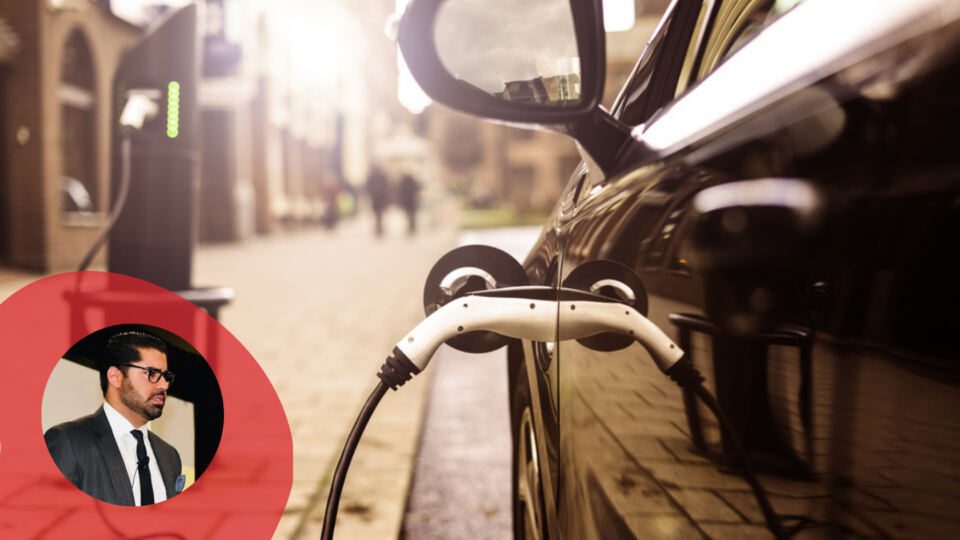Each day, more electric vehicles (EVs) are hitting the road as consumers and commercial drivers look to reap the potential long-term financial and environmental benefits of the technology.
Oftentimes, one of the key factors in the decision to purchase an EV is how convenient it will be to charge these vehicles. Whereas drivers of gasoline-powered cars can expect to find gas stations prevalent in most areas, those who operate EVs generally have to search considerably harder to find places to charge up.
Despite this, EV adoption is poised to surge in 2022, and perhaps the greatest challenge in the industry is the lack of an easy-to-use EV charging infrastructure to support the growing number of vehicles.
Industry wide, low utilization percentages at EV chargers are due to several factors, but it mostly ties back to poor experiences — and these percentages will only go up when the experience of charging is simplified. That’s why retailers must focus on making chargers at their properties easily discoverable, easy to reserve and easy to use for shoppers.
Clearly the answer is not to implement thousands of closed networks at brick-and-mortar stores that require shoppers to download a myriad of apps, provide personal information, set up different billing accounts and hassle with clunky key fobs to charge. All of that is not only poor from a customer experience standpoint, but it also won’t support the widespread adoption of EVs as America transitions to a zero emissions future.
The driver payment process at retailers’ charging stations should be frictionless for shoppers. To ensure a frictionless charging experience, retailers should implement chargers with an open network that allow shoppers to discover, access and pay through existing apps and services they utilize, such as paying by simply scanning a QR code.
The charging challenge is currently so significant that it’s gotten the attention of governments as they look to promote EV usage. In an October 2021 report, Boston Consulting Group (BCG) noted, “as the EV ecosystem evolves, the industry finds itself in a classic chicken-or-egg dilemma: Which comes first, the electric vehicle or the charging station?”
Charging stations in most countries are still relatively few and far between, according to BCG. While many EV drivers use privately funded chargers at home or work, the firm said it still expects 20% to 50% of charging to take place on the road and at destination chargers, depending on the region. Many governments have already stepped in to kickstart the market for charging stations, according to the BCG report.
Regardless of how things work out from a funding or implementation standpoint, there is a huge opportunity for retail establishments to meet the growing demand for powering these vehicles — by implementing EV chargers as a new customer amenity in 2022. EV chargers turn parking lots at brick-and-mortar stores into a charging lot, bringing in more shoppers and shopping.
In particular, retailers can benefit from installing chargers with open EV charging networks — and “open” is the key component for success.
A closed EV charging network consists of fragmented walled gardens that are confusing to operate, and just about every network requires drivers to download an application or create an account to charge. But such networks don’t communicate with each other in ways that benefit the consumer. Drivers who have Tesla vehicles and charge at Tesla chargers can simply plug in, and the system automatically starts a charging transaction. But if they take their Tesla to charge at stations not operated by Tesla, that convenience is not available.
For retailers, it’s critical that charging stations on their properties support all types of EVs, and this requires an open architecture and standardization, including plugs that are compatible with all vehicles and payment systems that don’t require users to provide personal information every time they use the system or to download a new app. Technology such as open application programming interfaces (APIs) can help system builders provide open access charging stations, which will enhance the charging experience for shoppers.
With an open API-based model, shoppers can use apps such as Google Maps to find charger locations at retail establishments and click directly through to start a charging session without having to download an additional app or create a separate account.
The U.S. federal government is seeking to help fund the infrastructure needed for charging EVs nationwide. For example, the American Jobs Plan will establish grant and incentive programs for state and local governments and the private sector to create a national network of chargers, including a $15 billion investment to incentivize the manufacturing and installment of chargers. States are offering rebates and incentives that make the purchase and installation of EV chargers more affordable for companies. These apply to a variety of businesses, including retailers.
For retailers, adding charging stations can contribute to the bottom line via added revenue. EV charging can turn a parking lot into a charging lot, bringing in new customers and increasing the amount of time they stay on the premises.
Providing EV charging also allows retailers to strengthen customer engagement and demonstrate their continued commitment to delivering top amenities that are designed to meet the needs of today’s and tomorrow’s shoppers, while at the same time advancing the sustainability movement.
Hooman Shahidi is the President and Co-founder of EVPassport, the technological evolution of EV charging software and hardware for forward-thinking companies around the world that place high value on the satisfaction of their customers, guests and tenants.




